[Disclaimer: This article is for informational purposes only and does not substitute medical advice. Always consult a healthcare provider to get a personalized treatment plan.]
Is pain making your everyday activities troublesome? Do you want a safer treatment option that not just masks pain but fixes the root cause?
Traditional painkillers provide temporary relief. However, their prolonged use can cause severe side effects.
Peptides are a safer and more effective treatment option to manage pain without causing long-term damage.
In this article, we will explore the best peptides for pain, their action mechanism, and their advantages over traditional therapies.

The Science Behind Peptides for Pain Management
Before we get to the science, let’s understand the common traditional pain medications and their disadvantages:
- Corticosteroids Treatment: High-dose corticosteroids are often prescribed for orthopedic conditions. However, these medications cause atrophy (decreased tissue mass) of bones, tendons, cartilage, and ligaments by reducing collagen synthesis, thus worsening the core issue.
- Lidocaine Injections: Some practitioners inject lidocaine (a numbing compound) into the joints for short-term pain relief. However, in the long run, lidocaine makes the arthritic condition (arthopathy) worse.
- Anesthetics: Anesthetics are potential pain blockers. However, they obstruct all sensory neurons, temporarily making patients numb.
- Opioids: Opioids are effective painkillers. However, they may cause a few adverse effects, including addiction, numbness, and breathing issues.
Peptides relieve pain without causing severe side effects like traditional medications do. Plus, these compounds can target specific damaged areas, fight the root cause, and provide long-lasting pain relief.
Also, peptides tend to interact with sensory neurons to suppress pain signals without numbing the body. Additionally, peptides can be combined with other peptides or treatments for synergistic effects or speedy healing.
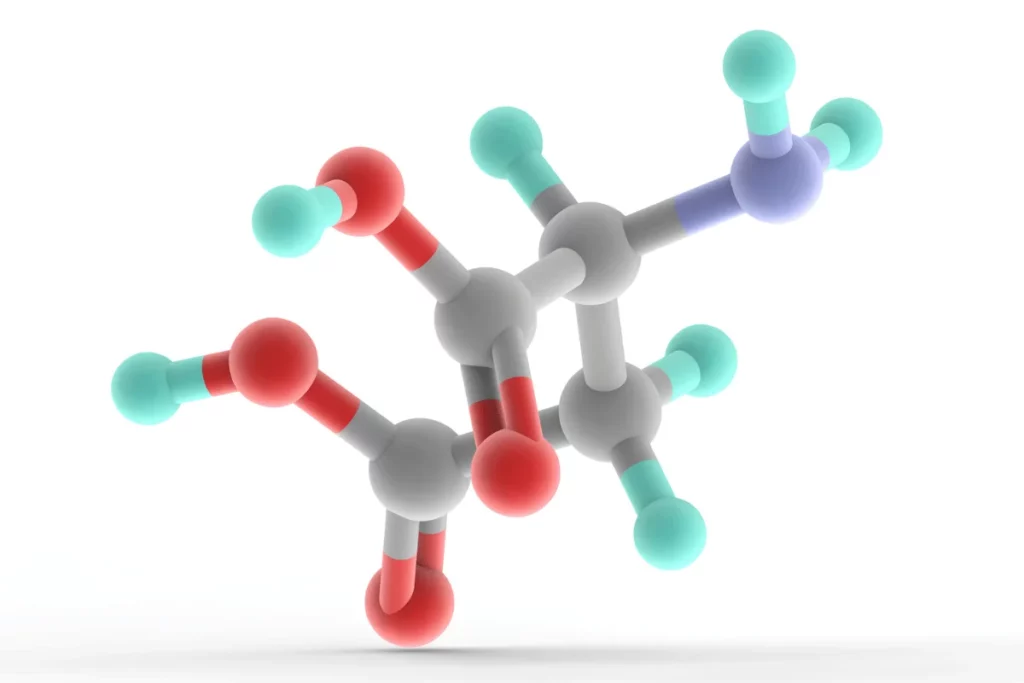
Peptides vs. Traditional Pain Management Approaches
Explore the difference between peptides and traditional pain management approaches below:
Benefits of Using Peptides for Pain Relief
The benefits of peptides for pain relief are as follows:
- Alternative to Opioids: Peptides can work as an alternative to opioids for relieving pain without holding addiction risks.
- Regenerative Potential: Peptides have the tendency to regenerate cells, rebuild connective tissues, and remodel bones.
- Anti-Inflammatory Efficacy: Some peptides show anti-inflammatory potential and reduce pain and swelling. By suppressing inflammation, they heal arthritic conditions and surgical wounds and scars.
- Minimal Side Effects: Peptide treatments aid in relieving pain without major side effects, unlike traditional pain relievers.
- Improved Joint Health: Certain peptides aid collagen production and cartilage repair. Plus, they form blood vessels to supply nutrients for the speedy healing of joints and other tissues.
Third-Party Tested, 99% Purity
Order lab-verified peptides from our top recommended vendor.
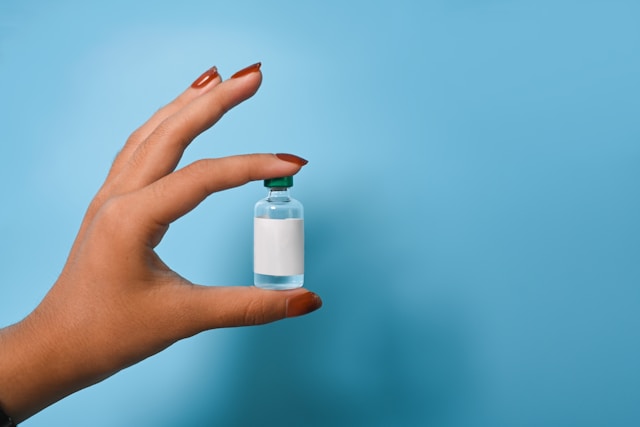
Best Peptides for Pain
Peptides are used as a safe pain-relieving therapy as they enhance quality of life without causing severe side effects.
Let’s look at the top ones:
Peptides for Back Pain
Back pain is mostly caused by muscle or ligament strain, bulging/ruptured disks, twisting, lifting, bending, or poor posture.
The best peptide for back pain:
TB-500
TB-500 peptide can potentially repair damaged tendons, muscles, and connective tissues. It also tends to form blood vessels to facilitate the delivery of oxygen and nutrients for accelerated healing.
Cell loss occurs in human discs due to apoptosis (cellular death). A study published in the Biotechnic and Histochemistry journal checked the effect of TB-500 on the degenerated intervertebral disc. The study results revealed that TB-500 treatment suppressed cell loss in the human intervertebral cells.
Additionally, TB-500 alleviates muscle soreness in athletes and workout enthusiasts. Therefore, it is considered one of the best peptides for athletic performance.

Peptides for Knee Pain
The knee joint comprises ligaments, cartilage, bone, and fluid. Tendons and muscles attached to it aid in joint movement. Knee pain is caused when any of the structures get degenerated or damaged.
Let’s look at the top peptides that can alleviate knee pain:
BPC-157
Like TB-500, BPC-157 forms blood vessels to accelerate the healing of musculoskeletal injuries. That’s why it is often paired with TB-500 for synergistic benefits.
According to a clinical study published in Alternative Therapies in Health and Medicine, when patients were administered BPC-157 peptide injection for joint pain, it:
- Treated multiple types of knee pain
- Improved joint function
That’s why BPC-157 is considered the best peptide for pain.
Also, the BPC-157 peptide has the potential to repair tears and develop cartilage. Therefore, you may also consider these peptides for pain in the back and multiple types of joints, including knees, shoulders, hips, and elbows.
Fun Fact: BPC-157 is also placed among the best peptides for muscle growth due to its regenerative potential.
AOD-9604
AOD-9604 peptide has the potential to break down fats and repair tissues. Also, the peptide stimulates the synthesis of a protein found in cartilage and tendons called collagen II.
In a pre-clinical study published in Annals of Clinical and Laboratory Science, AOD-9604 injections alleviated knee osteoarthritis in rabbits by:
- Stimulating cartilage regeneration
- Decreasing inflammation and pain in knee joints
Due to its cartilage-regenerating and pain-relieving effects, AOD-9604 is considered one of the most effective peptides for arthritis. It is often combined with BPC-157 or other peptides for synergistic benefits.
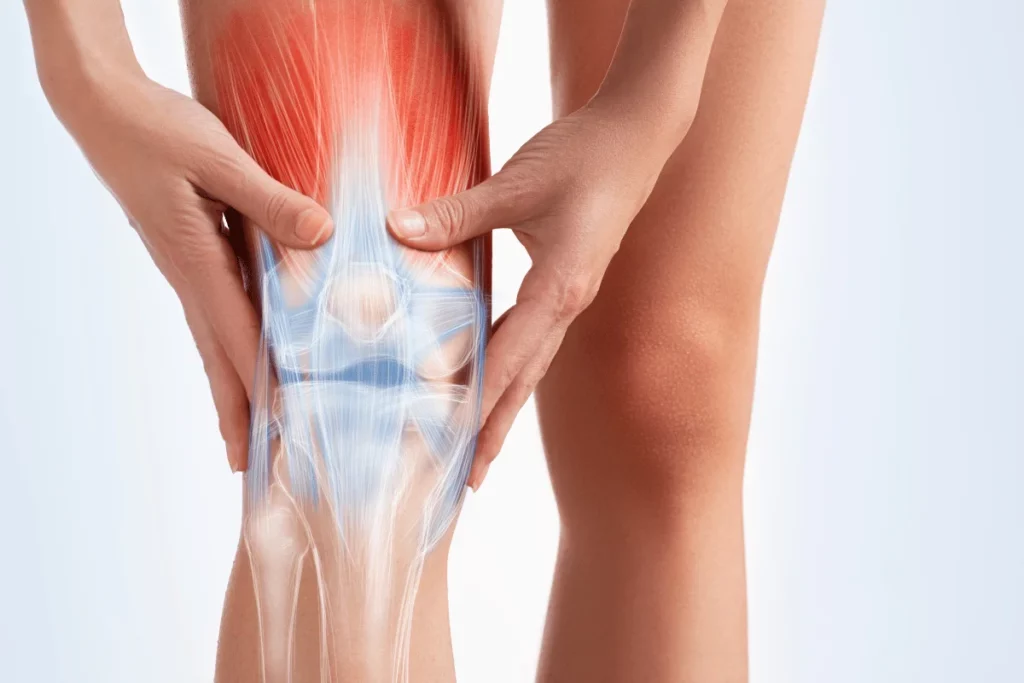
Collagen Peptides for Knee Pain
Collagen is undoubtedly the best peptide for joint pain. In a study published in the Journal of Orthopedic Surgery and Research, researchers assessed the analgesic (pain-relieving) activity of collagen peptides and found that they provided significant pain relief to patients with knee osteoarthritis.
In another clinical study published in Applied Physiology, Nutrition, and Metabolism, researchers evaluated the effect of collagen peptides in decreasing pain in athletes with functional knee issues during sports.
These athletes orally took 5g of bioactive collagen peptides for 3 months. The treatment:
- Significantly reduced the activity-related pain intensity
- Reduced resting pain
Collagen peptides are listed among the best peptides for bodybuilding as these compounds support joint health and aid in heavy lifting. Additionally, the peptides improve muscle growth and recovery following workouts.

Peptides for Joint Pain
Joint pain affects single or multiple joints of the body. You may feel a disturbance in the hands, spine, knees, hips, and feet due to swelling, numbness, stiffness, and motion loss.
Causes of joint pain include arthritis, injury, tendinitis, or gout (a condition in which needle-shaped crystals build up in the joints, causing pain).
Here’s the best peptide for joint pain:
PPS
Pentosan polysulfate sodium (PPS) is an FDA-approved oral medication. The peptide is commonly referred to as a disease-modifying osteoarthritis drug. In an open clinical trial published in BMC Clinical Pharmacology, the effect of PPS was checked in knee osteoarthritis patients. PPS peptide treatment:
- Reduced knee joint pain while bending, walking, and after going upstairs and downstairs
- Alleviated hydrarthrosis — a condition with an abnormal fluid quantity in a joint cavity
- Reduced degradation of type-II collagen in the cartilage
In another study published in the Osteoarthritis and Cartilage Open Journal, researchers checked the effect of PPS against dyslipidemia (higher cholesterol) and knee osteoarthritis. PPS peptide therapy:
- Reduced the level of bad cholesterol
- Provided relief from knee joint pain
Owing to the anti-inflammatory and cartilage-reparative potential of PPS, the peptide could be used to reduce pain in multiple types of joint pain.

Peptides for Shoulder Pain
Shoulder pain is often caused by joint degeneration, called osteoarthritis. According to the National Institute of Arthritis and Musculoskeletal and Skin Diseases, osteoarthritis is the most common arthritis type and is more prevalent in older people.
The following peptide is most effective for osteoarthritis-related pains, including shoulder pain:
VIP
Vasoactive intestinal peptide (VIP) could be used for shoulder pain caused by osteoarthritis, inflammation, and/or nerve injury. In a pre-clinical study, when VIP was injected into osteoarthritic knee joints of rats, the peptide:
- Reduced pain within 10 minutes
- The pain-relieving effect lasted for an hour
This indicates that VIP may provide short-term relief from pain caused by osteoarthritis. In another pre-clinical study, VIP alleviated osteoarthritis and reduced the discomfort of rat knees by:
- Inhibiting the inflammation-stimulating (NF-κB) pathway to reduce inflammation
- Strengthening the structural protein of cartilage (aka collagen II)
Other studies published in Trends in Pharmacological Sciences and Cell Reports indicated that VIP could also be a promising peptide for managing neuropathic (nerve) pain. Experts say nerve pain in the shoulders is caused by pinched or compressed nerves in that area.
Therefore, VIP could be a potential option to alleviate shoulder pain implicated by arthritis, inflammation, or neuropathic pain.
Note: Besides osteoarthritis, overuse or injury of tendons and/or tears in rotator cuff tendons cause shoulder pain. BPC-157 is used for shoulder pain caused by tendon issues. Therefore, this peptide is listed among the best peptides for tendon repair.

Peptides for Nerve Pain
Damage to the nervous system causes nerve pain (aka neuropathic pain). It gives a burning, stabbing, or shooting sensation. Also, you may feel numbness to touch, light, or warm objects, disturbing your daily activities.
Nerve pain is caused by several disorders, such as diabetes, HIV/AIDS, shingles, alcohol addiction, and stroke.
You can take the following peptide to reduce the pain:
ARA290
ARA290 is an erythropoietin (a hormone that stimulates red blood cell production) analog. It plays a key role in healing and fights inflammation. However, unlike erythropoietin, it does not increase the production of red blood cells.
In a review published in Pain Reports, ARA290 peptide treatment:
- Provided relief from cold, light, touch, and pressure allodynia (pain from non-painful stimuli) after sciatic nerve injury in mice.
- Improved nerve pain after small fiber neuropathy in patients with sarcoidosis (overreaction of the immune system, making clusters of inflamed tissue).
- Regrew small nerve fibers in the cornea of sarcoidosis patients and alleviated nerve pain.
Therefore, ARA290 is a potential peptide to mitigate neuropathic pain. However, a study indicates that its short half-life could limit its application. So, scientists should focus on formulating longer-lasting versions to enhance the peptide efficacy.

Peptides for Chronic Pain
The National Institutes of Health (NIH) defines chronic pain as the pain felt every day or on most days in the past 3 months. According to the latest report shared by the Centers for Disease Control and Prevention (CDC), 24.3% of adults in the United States experience chronic pain.
Additionally, it was shared that chronic pain percentage in adults increases with age.
Here’s an excellent peptide to alleviate your pain:
H-20
H-20 is a PD-1 agonist, a substance that suppresses the hyperactive immune system and reduces inflammation and pain. In a pre-clinical study published in Proceedings of the National Academy of Sciences, H-20 reduced chronic pain in mice by:
- Calming overexcited pain signals in nerve cells
- Reducing pain without causing side effects like those caused by opioids
Additionally, H-20 showed significant antidepressant effects in mice. However, the research is yet in the early stages. So, you must consult your doctor and avoid self-experiments.

Peptides for Inflammation Pain
Studies indicate that inflammatory pain occurs when the immune system responds to infection or tissue damage. It is characterized by higher pain sensitivity, and the body may feel spontaneous pain, especially during the healing process after an injury.
The top peptide for this kind of pain is:
Thymosin-alpha 1 (TA1)
Research says that TA1 is a well-tolerated and potential immune modulator. Let’s take a look at some research-backed benefits of TA1:
- Another review published in the journal Vitamins and Hormones reported that TA1 peptide tends to regulate the immune system and decrease inflammation.
- Research published in Immunity and Aging reported its immunomodulatory role. In the study, TA1 decreased the production of inflammatory cytokines to fight inflammation.
- In a clinical trial, patients receiving TA1 in combination with chemotherapy experienced less pain and fewer side effects compared with those getting chemotherapy alone.
Therefore, TA1 could be used to mitigate inflammatory pain and related conditions.
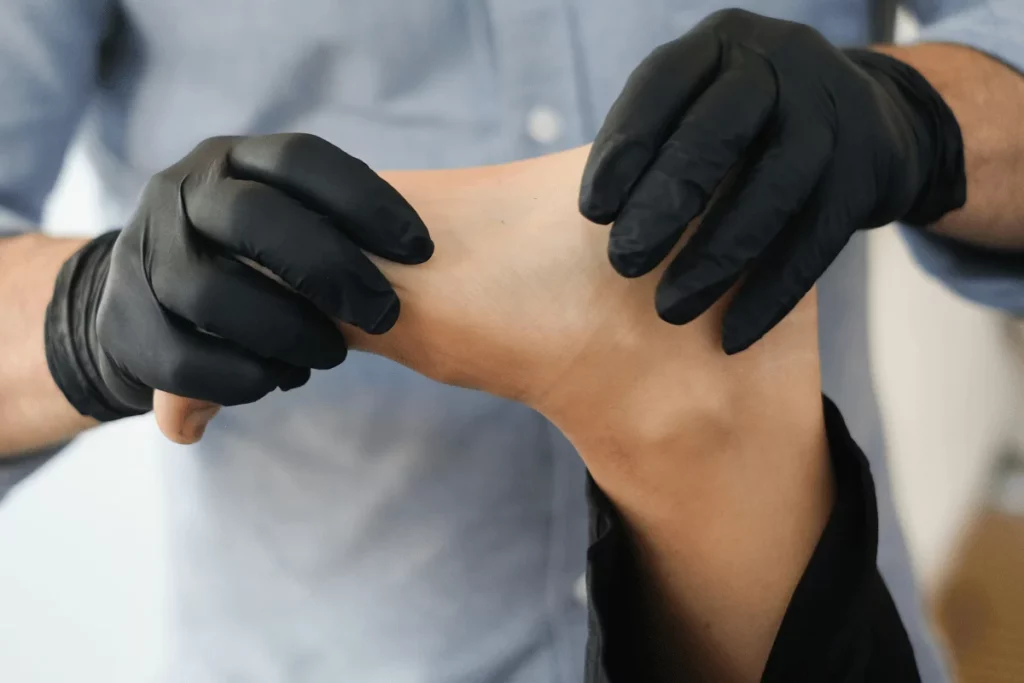
Peptides for Hip Pain
Hip pain is usually caused when the cartilage in the hip joint wears down with aging or overuse. Other causes of hip pain include osteoarthritis, hip fractures, tendinitis, strain, or inflammatory arthritis.
Consider these peptides for hip pain:
Collagen Peptides
According to a clinical trial published in the International Journal of Environmental Research and Public Health, collagen peptides were provided to those experiencing joint discomfort and difficulty in performing daily life activities.
The treatment improved their daily routine activities by:
- Reducing lower back pain, including knees and hips
- Reduced functional joint pain during walking, going upstairs, and at rest
- Reduced pain when squatting or kneeling down
A collagen peptide user shared his experience, saying:
Collagen peptides really do help my chronic hip pain. A few weeks on collagen peptides and my pain that had bothered me for 10 years was completely gone. I could finally walk up the stairs with no pain. When I’m off of it for several months the pain comes back. It always gets better with collagen.

Peptides for Elbow Pain
Elbow pain is caused by overuse, injury, arthritis, sprains, tendinitis, shoulder problems, and bursitis (a joint condition in which small sacs that cushion the tendons, muscles, and bones near the joints become inflamed).
One of the top peptides for elbow pain is:
IGF-1 LR3
IGF-1 is a peptide hormone available in the form of IGF-1 LR3 (Insulin-like Growth Factor 1 Long R3). Research indicated that IGF-I LR3 is three times more potent than IGF-1 in stimulating the synthesis of muscle protein in rats.
IGF-1 LR3 therapy is particularly common among men because it helps them achieve their bodybuilding goals. The peptide contributes to muscle growth, healing, anti-aging, and metabolic health.
This peptide therapy may:
- Enhance bone density
- Support collagen production
- Boost immune response
- Aid cellular regeneration of connective tissues
- Improve joint health and prevent wear and tear of tissues
In a pre-clinical study published in The American Journal of Sports Medicine, IGF-1 LR3 peptide treatment in rats:
- Accelerated recovery of tendons
- Reduced inflammation
While the study is unrelated to the elbow, it indicates that IGF-1 LR3 could be used for tissue repair and reduce inflammation and pain. Therefore, it may aid in the alleviation of elbow pain.
However, its misuse could cause side effects, including unwanted tissue growth or hypoglycemia (a condition of low glucose level in the blood).
If you’re looking for a more established peptide, collagen peptides, BPC-157, and TB-500 are also among the best-suited peptides for elbow pain.
Note: A few peptides mentioned in the article have not undergone clinical trials yet. Also, their safety and approval status may differ depending on your location. So, always consult your doctor before starting any peptide therapy.

Risks and Considerations of Peptide Therapy
Peptide therapy, despite having treatment potential, holds a few risks, as given below:
- Allergic Reactions: Some peptide users may experience allergic reactions, such as breathing difficulty, swelling, or hives.
- Injection Site Irritation: Peptides administered through injections may irritate the injection site.
- Systemic Side Effects: Peptide therapy could cause systemic side effects, including high fluid retention, flushing, and headaches.
- Lack of FDA Approval: Several peptides lack FDA approval, raising concerns about their efficacy and safety.
- Danger or Misuse: Self-prescribing or self-injecting peptides without proper knowledge and medical supervision may cause adverse health risks.
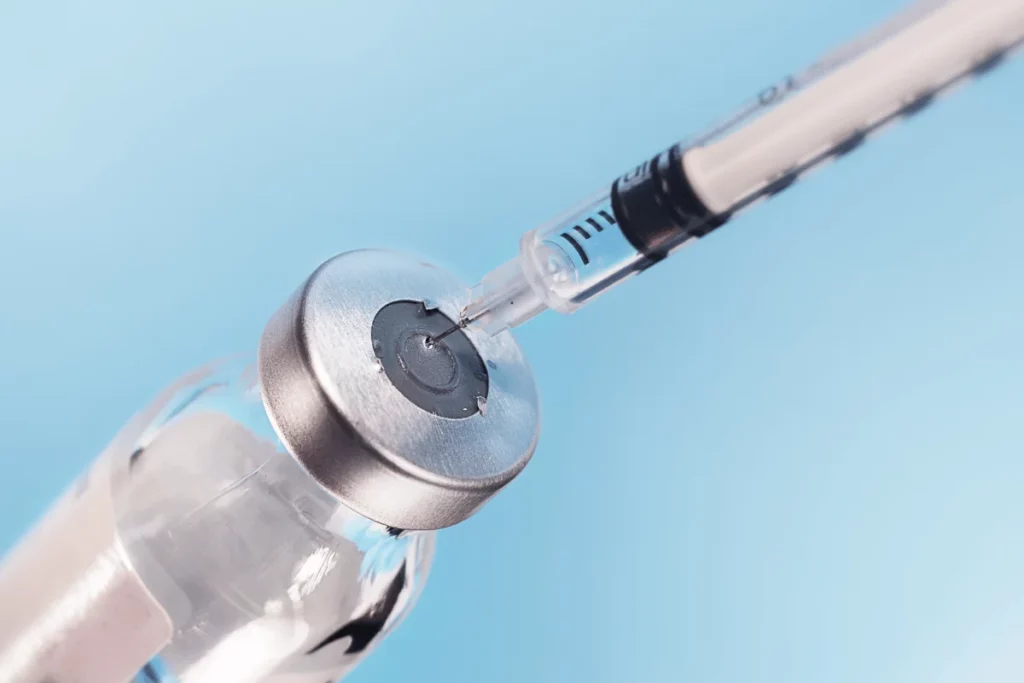
Frequently Asked Questions (FAQs)
Answers to the frequently asked questions regarding peptides for pain are as follows:
Are Peptide Therapies Safe for Long-Term Use?
Well, it depends on the specific peptide and the individual’s health condition. For example, in a study published in the Complementary Therapies in Medicine, individuals ingested collagen peptides daily for 6 months without experiencing major side effects.
However, some peptides yet need thorough human testing. Although anecdotal evidence has revealed their healing efficacy for musculoskeletal injuries, their long-term use safety profile is not yet established.
Therefore, always do your research and consult a healthcare provider before opting for any peptide therapy, especially for long-term use.
What Should I Look For When Choosing a Clinic or Practitioner for Peptide Therapy?
Keep the following considerations in mind when choosing a clinic or practitioner for peptide therapy:
- Check Credentials: Make sure to choose a licensed healthcare provider with peptide-related knowledge or specialized training programs like the International Peptide Society (IPS) or the American Academy of Anti-Aging Medicine (A4M).
- Check Reviews: Do a little research about the clinic and read reviews or testimonials by patients.
- Consultation and Tailored Treatment: See if the clinic/practitioner offers consultation, reviews your medical history and test reports, and provides tailored treatment plans according to your needs.
- Peptide Quality: Ask about the peptide source. Make sure they are sourced from certified labs for the sake of safety and purity.
- Follow-Up Care: A good practitioner will monitor your treatment results and adjust your treatment plan as per your requirements.
Can Peptides Be Used to Manage Pain After Surgery?
Yes, peptides can be used to accelerate recovery after surgery or injury. Surgery may cause inflammation, leading to pain and discomfort. Also, the immune system may be impaired during surgery. Peptides can restore immune function and suppress inflammation.
Moreover, they form blood vessels to deliver oxygen and nutrients to the damaged tissues for speedy healing. Additionally, peptides play a role in tissue regeneration, fight infections, heal wounds, and lessen scarring after surgery.
Conclusion
Peptides are a safer alternative to conventional pain relievers as they don’t cause severe side effects or make individuals addicted. Also, they don’t just relieve pain but also contribute to fixing the root cause.
Peptides reduce inflammation, boost collagen production, and regenerate and heal tissues.
To name a few top options, BPC-157, collagen peptides, and AOD-9604 are the best peptides for joint pain and back pain.








